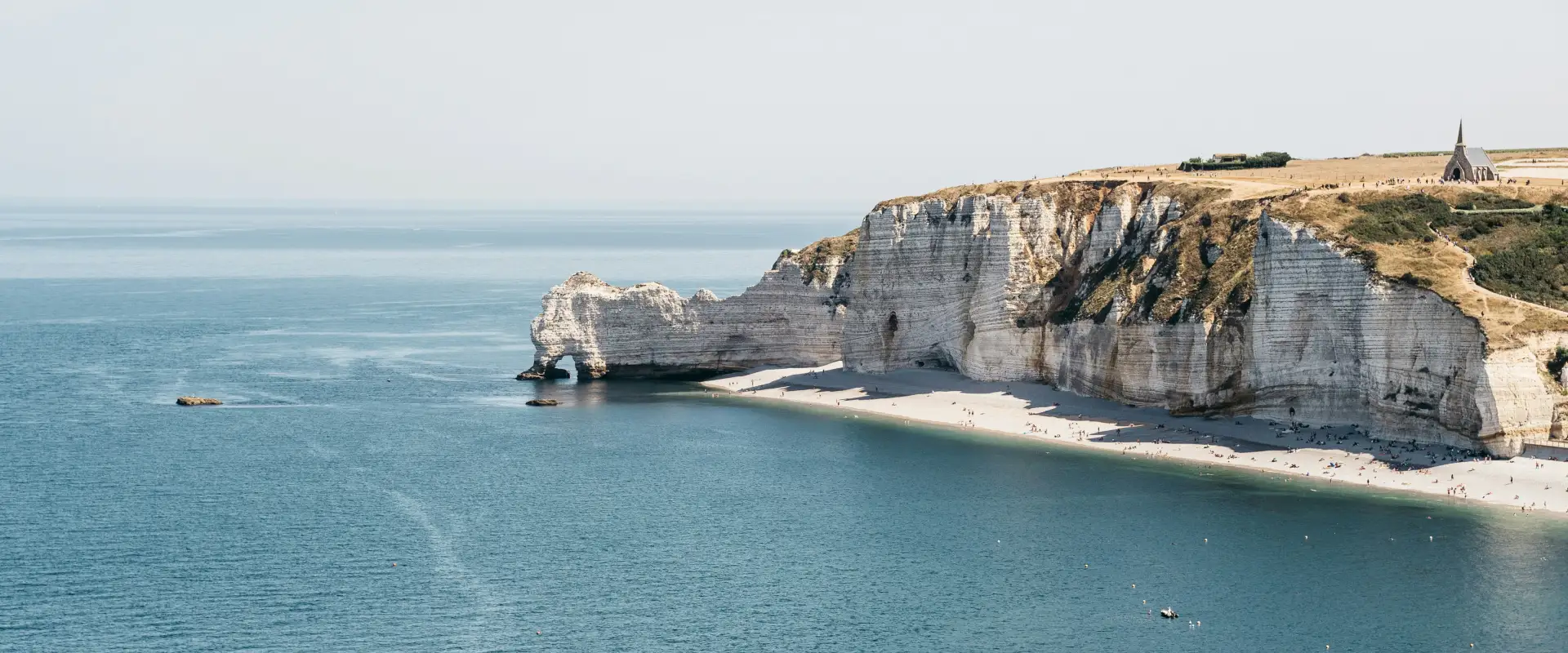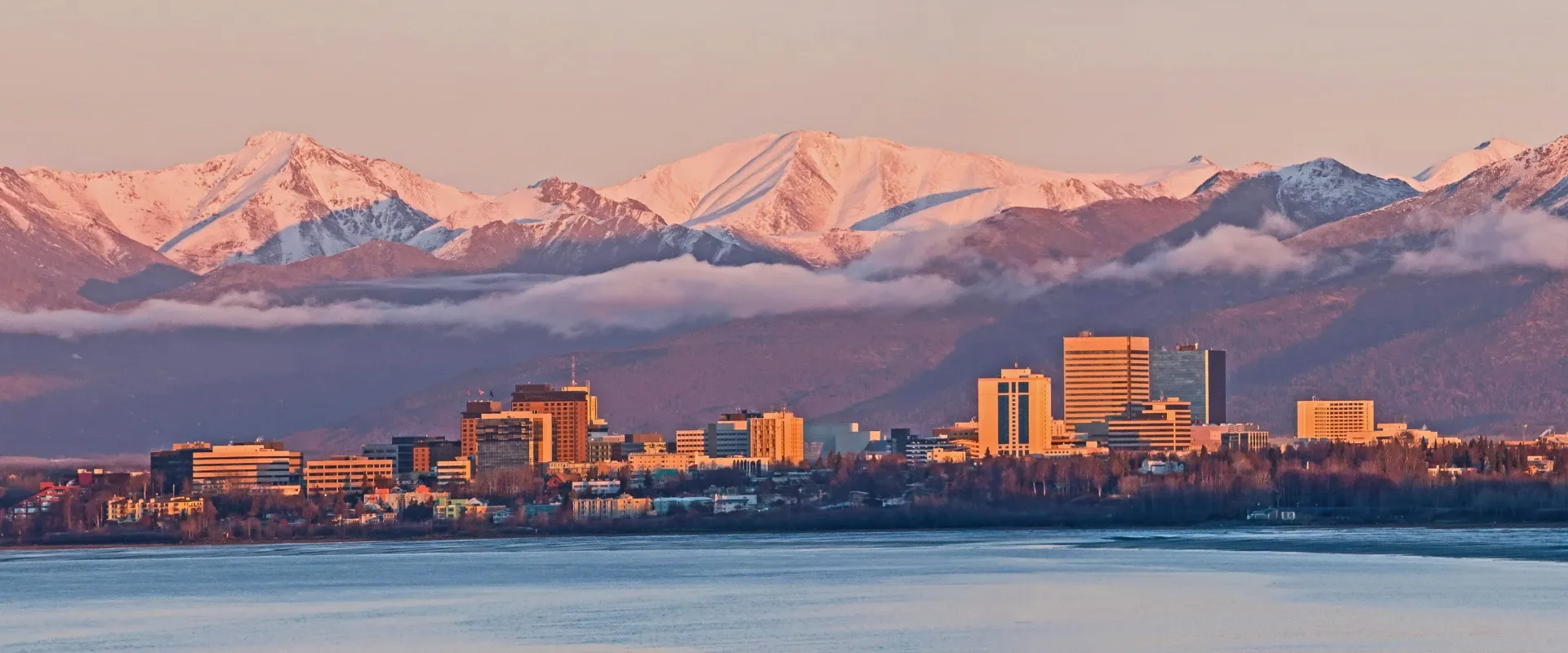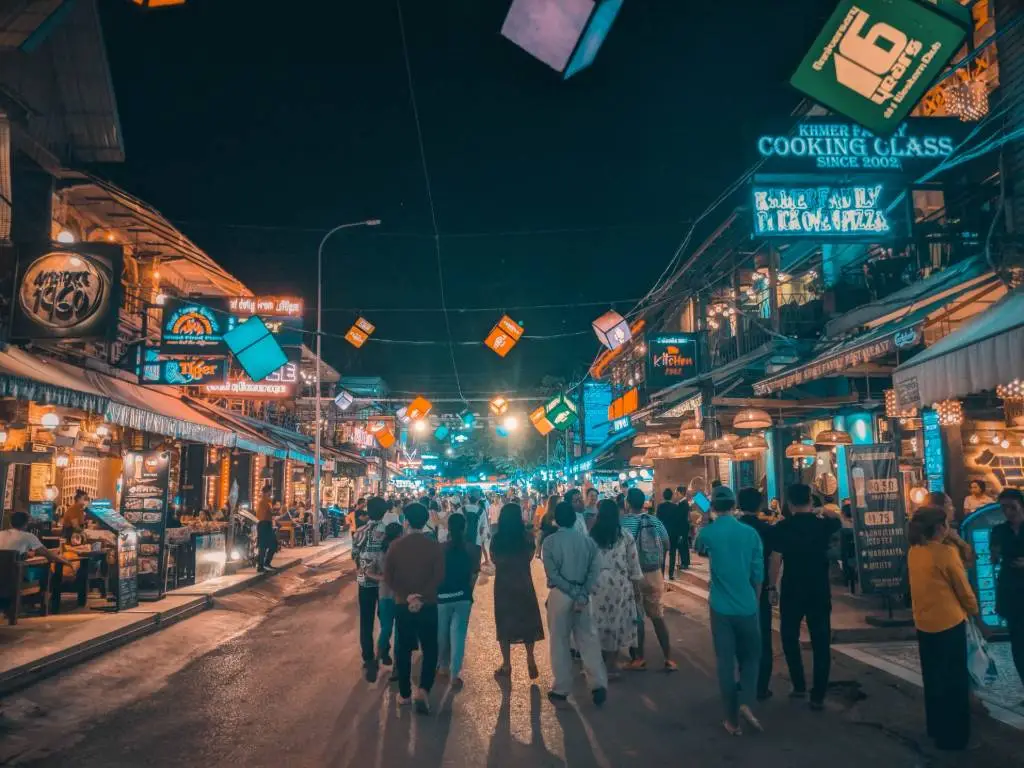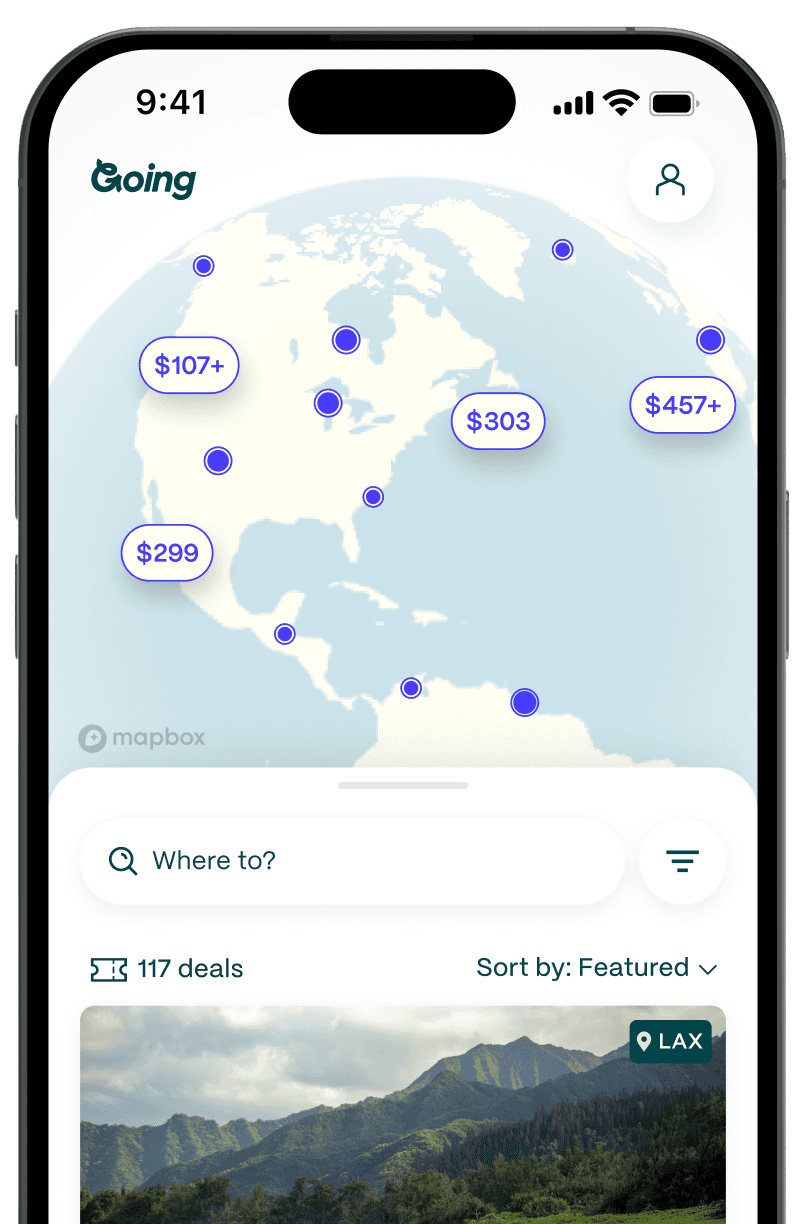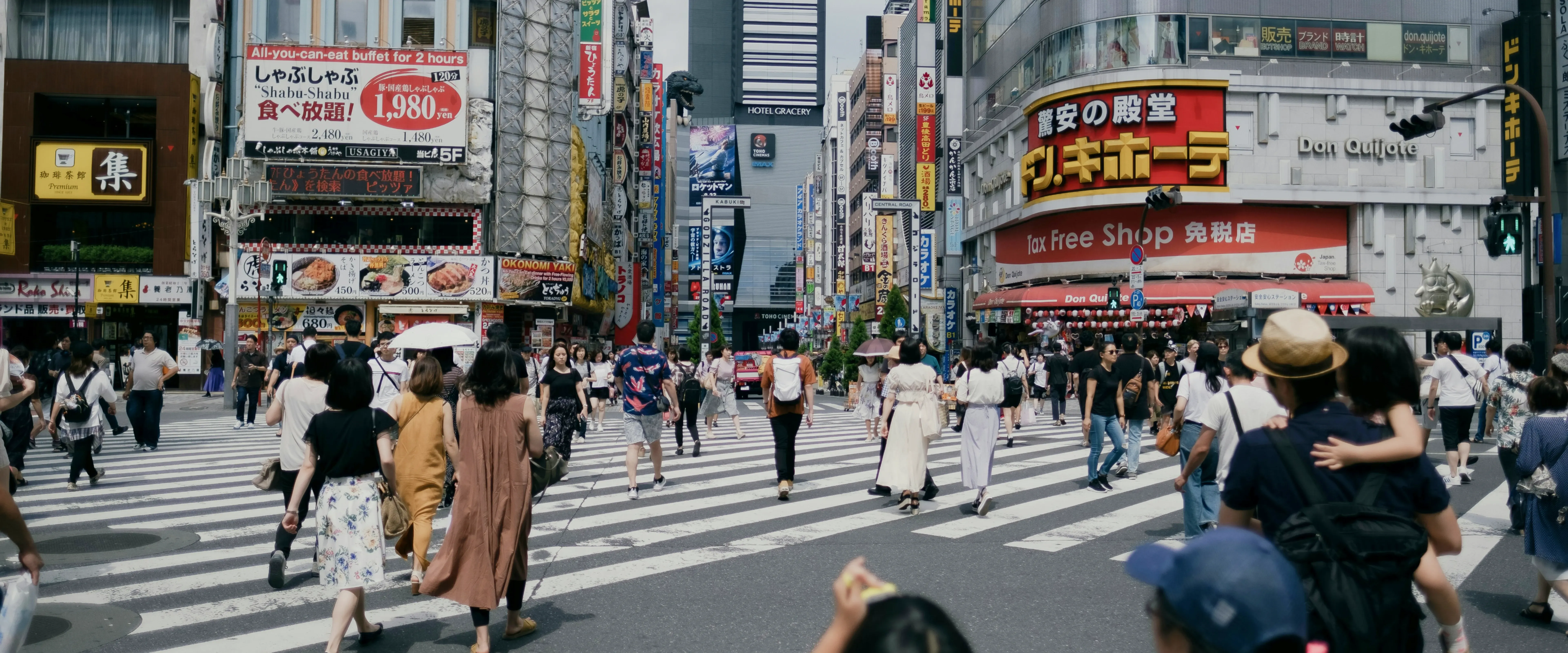
This Asian Capital Holds the Most Michelin Stars in the World
Home to almost 14 million people, Tokyo got its start as a sleepy fishing village called Edo. The town’s fortunes shifted after the military ruler Tokugawa Ieyasu established his base of power there in 1603. Edo—along with its prominence—grew rapidly, as the influx of feudal lords and workers gave rise to a uniquely dynamic culture.
In 1868, the metropolis displaced Kyoto as the capital of Japan and was renamed Tokyo. During World War II, air raids devastated the city, but in the decades of rebuilding and modernization that followed, Tokyo emerged as a global economic hub. Still, traces of the old town remain.
The result is a dizzying landscape of contrasts and serendipity—Shinto shrines and sculpted gardens set amid clusters of high-rises and warrens of alleys filled with shoebox-sized bars. A nexus of tradition and innovation, Tokyo never ceases to surprise. You’ll get lost in this sprawling metropolis (it’s nearly three times the size of NYC or Singapore), but that’s all part of the fun.

City of water
In ancient times, Tokyo relied on an intricate network of more than 100 rivers and canals, now concealed beneath tons of steel and concrete. Edo-era woodblock prints offer a glimpse of the city’s aquatic past, when boats ferried goods along the bustling waterways from warehouses that lined the Tokyo Bay.
Pollution from industrialization and the aftermath of the Second World War rendered canals and tributaries unusable; opting for more Western styles of building, the city filled in streams with concrete and constructed highways over rivers. Developments such as the Odaiba land reclamation project have attempted to revitalize the waterfront, and the city plans to increase its water transport options in the years to come. National broadcaster NHK released a documentary exploring the topic in July 2021.
Temples and shrines

Though more modest in number and grandeur than Kyoto’s temples and shrines, Tokyo’s places of worship have played a significant cultural role throughout history. One of the oldest shrines dating back to the 8th century, Kanda-myōjin is where Tokugawa Ieyasu paid his respects; during the Meiji period, it became one of the 10 shrines in Tokyo given special status by the emperor.
More than mere tourist attractions, these sites continue to serve a spiritual function for locals. More than 3 million people regularly flock to the Meiji Jingu shrine to pray at the start of the New Year, while fire rituals—accompanied by Buddhist chanting and taiko drumming—are performed daily at Fukagawa Fudo-do temple. In residential areas, fresh flowers and other offerings are constantly replenished at the miniature shrines and altars that dot the streets.
“Downtown” renaissance
The historically working-class shitamachi (downtown) areas of eastern Tokyo are undergoing a creative transformation. In Kyojima, an aging neighborhood known for traditional crafts, artist-in-residence programs, and projects such as the Sumida Mukojima Expo (an annual art festival and other events held throughout the year inside renovated wooden tenement houses), are breathing new life into the community. Temporary shops and exhibitions can also be found along the main shotengai shopping street.
Young entrepreneurs are also collaborating with local artisans, renting retail spaces along the old shotengai (shopping streets) and introducing new businesses like the hip natural wine shop, apéro.
From neon jungle to silver screen

The Shinjuku neighborhood, with its frenetic jumble of towering skyscrapers and neon-lit blocks dotted with smoke-filled noodle joints, is fodder for filmmakers. The area famously inspired the set of Ridley Scott’s Blade Runner, and in Sofia Coppola’s Lost in Translation, Bill Murray and Scarlett Johansson sipped cocktails against a backdrop of the glittering Tokyo skyline from the 4floor of the Park Hyatt hotel.
Writer Jake Adelstein’s memoir “Tokyo Vice” depicts the area’s seedier side, along with the hostesses and yakuza gangsters that populate the Kabukichō red-light district; a television drama based on the book, starring Ansel Elgort and Ken Watanabe, is set to premiere on HBO Max in early 2022.
Urban oases

From the meticulously manicured Hamarikyu Gardens, which were built in the 1st century, to the moat-encircled grounds of the Imperial Palace and the cherry tree-lined lanes of Ueno Park, public gardens offer a welcome respite from hectic city life.
In recent years, large urban developments have cultivated green spaces on tower rooftops, along corridors connecting shopping complexes, and even above highways. The rooftop garden that sits above the newly built Miyashita Park commercial complex covers more than 100,000 square feet and features recreational facilities such as a sand-filled volleyball court. And, the ring-shaped Meguro Sky Garden—built above the junction of two motorways—brims with a variety of flora ranging from pine and cherry trees to bamboo.
Kawaii culture
Kawaii culture—the “cute” aesthetic that propelled the success of beloved manga and anime characters such as Sailor Moon and the entire cast of Pokémon—originated in Tokyo.
Working in his Nihonbashi boutique in the early 1900s, painter Yumeji Takehisa created illustrations depicting dreamy beauties with rounded features and large eyes. The designs were an instant hit, sparking a boom in cutesy products specifically aimed at young women. The motifs later inspired the look of Hello Kitty, the adorable character that was created in 1974 and helped turn Sanrio’s founder, Shintaro Tsuji, into a billionaire.
In his book Pure Invention, writer Matt Alt explores how the kawaii phenomenon and other pop-culture trends transformed Japan into a cultural superpower that has conquered the world’s imagination.
A culinary capital

The birthplace of sushi and ramen, Tokyo boasts more than 150,000 restaurants, with nearly 200 Michelin-starred establishments—more than New York and Paris combined.
What makes the food scene so dynamic is the tantalizing mix of traditional and avant-garde cuisine: For lunch, you can slurp soba at Kanda Matsuya, a noodle specialist that’s been operating since 1884, and then have dinner at Florilège, where chef Hiroyasu Kawate blurs the lines between contemporary Japanese and French cooking, before finishing the night with a steaming bowl of tsukemen (ramen noodles with a dipping sauce) in Nakano, the neighborhood where the dish was purportedly invented.
The past few years have seen greater gastronomic diversity, with new openings from internationally acclaimed chefs such as Massimo Bottura’s Gucci Osteria and Daniel Calvert’s SÉZANNE.
Asia’s LGBTQ center
Thanks to high levels of safety and increasingly accepting attitudes, Tokyo has emerged as a popular destination among the queer community in Asia. After the Second World War, bars catering to gay clientele began appearing in the Ni-chome neighborhood of Shinjuku.
Consisting of only a handful of blocks, the area nonetheless features the largest concentration of gay bars in the city (and possibly, the world). On sunny weekends, lively crowds spill out onto the streets, clinking glasses to a house-music beat. More subdued pockets of queer culture can also be found along the quiet backstreets of Asakusa, an area once known as a gathering place for gay men in Edo times.
Liquid inspiration

Drinking is so much a part of Japanese culture, there’s even a word to describe the way alcohol functions as a social lubricant: nomyunikeishon, a portmanteau of the words for drinking and communication.
From natural wine and sake bars to high-end tequila dens and swish cocktail lounges, the Japanese capital will never leave you high and dry. Watering holes are hidden in basements and alleyways, perched on swanky hotel rooftops, and tucked into high-rises. Creative concepts like The Bellwood, inspired by a Taishō-era coffee house, and swrl., which serves wine-based cocktails alongside pan-Latin fare, are adding a fresh perspective to the city’s renowned cocktail scene.
Brush up on your home mixology skills with one of these recipes from the SG Group Their SG Club ranked No. 10 on the 2020 list of The World’s Best Bars.
Multicultural Tokyo
While non-Japanese account for less than 3% of the total population, the number of foreign-born residents has increased steadily over the past several years. In Tokyo, a number of thriving ethnic communities are adding to the cultural diversity of the capital.
Walk through the Shin-Ōkubo neighborhood and you’ll find shops specializing in Korean cosmetics and restaurants specializing in the latest food trends in Seoul. Edogawa-ku’s Little India holds an annual Diwali festival that attracts thousands of visitors, while the Asakusa Samba Carnival celebrates Brazilian culture.
Chinese enclaves are flourishing in areas such as Ikebukuro, and in recent years, a cluster of Burmese restaurants serving mohinga and Shan cuisine in Takadanobaba has popped up to cater to the growing number of immigrants from Myanmar. In the northwestern suburb of Yotsugi, the restaurant Little Ethiopia, owned by asylum-seeker Ephrem Haile, functions as an informal cultural center for the Ethiopian community.
Good to know
How to budget for a trip to Tokyo
You may think that a city as cutting-edge as Tokyo would cost a pretty penny to vacation in, but it doesn’t have to. Hotel rooms are tiny—but you won’t be spending much time there, anyway, and what you lose in square footage, you’ll make up for in saved dollars. Budget $50-$80/night for basic accommodations, and up to $200 for something more unique or stylish. As for food, you can eat super cheap from 7-11s and other convenience stores which sell things like egg salad sandwiches, instant ramen, and onigiri (fried rice balls) for around $1. Truly excellent izakaya staples like ramen can be had for $10, and turning that into an all-out feast shouldn’t cost more than $25. If it’s sushi you’re craving, that’s another story, and eating at an exquisite sushi dinner will run you more like $75/person sans alcohol.
Safety considerations
More good news: Tokyo is an exceedingly safe place to visit. Both violent and petty crime rates are consistently low, and the city poses little to no threat to solo women, LGBTQIA+, or BIPOC travelers. That said, Tokyo experiences relatively frequent earthquakes, which can feel unsafe for anyone not used to it (the city’s buildings are all designed to naturally sway with earthquakes, which actually makes them safer, but it may seem scary initially). Also, while Tokyo is a queer-friendly place, public displays of affection in general are considered taboo, so regardless of orientation, overt romance is well, a turn-off in Japan.
Weather in Tokyo
Tokyo has a humid subtropical climate that results in hot, wet summers and mild winters. Summer average highs can soar to the high 80s, particularly in August, and the humidity can make it feel even hotter.
On the other hand, winter temps tend to hove in the 50s most days, dropping to the high 30s on the coldest nights. Snow in Tokyo is very rare, but typhoons can drop quite a bit of rain. Typhoon season runs from May to October with most storms passing in August and September.
When to visit Tokyo
The most popular times to visit Tokyo are during the spring cherry blossom season in March and April and during fall foliage season in October and November. Of course, this means longer lines and typically higher prices for accommodation. December-February is an underrated time to go. Temps are never that cold (particularly for those coming from the northern part of the US) and major attractions can feel almost empty. Bonus: it’s a great time to head north for skiing.
Money saving tips
Try some convenience store dining. Convenience stores in Japan are nothing like what we have in the US. Stores like 7-11, Family Mart, and Lawson’s are stocked with tasty ready-to-eat means like onigiri (fried rice balls), katsu, bento boxes, and more, all for a buck or two.
Skip the taxi. Traffic in Tokyo can be terrible and taxi rates are high. Whenever possible, take the train, which can whisk you across the massive city in about 30-40 minutes for just a few dollars.
Take in the free view. Instead of paying money to go up to one of the many observation decks around the city, head over to the Tokyo Metropolitan Government Building. It has two observatories and both offer free admission.
Public transportation options in Tokyo
Something Tokyo has in common with Los Angeles is that the city is more or less a collection of small cities that are all clustered together and referred to broadly as a part of the megacity. Where LA and Tokyo differ, however, is that in Tokyo, getting from area to area is a cinch, thanks to a peerless transit system comprising subways, trains, and buses.
The subway is extensive, efficient, and accessible, though it can be daunting for the uninitiated (mostly because of the crowds). First-time visitors may also be intimidated by taking the bus here, and it isn’t common among tourists to do so. Taxis and Ubers are also a good option when traffic is relatively light—just be careful, because the costs add up quickly from multiple taxi trips.
Tokyo airports
There are two airports serving Tokyo. The largest is Narita International Airport (NRT), about 37 miles from the city. It’s Japan’s busiest airport for both international travelers and international cargo. Narita is a hub for Japan Airlines, All Nippon Airways, Jetstar Japan, and Peach Aviation, and a focus city for Singapore Airlines.
Tokyo International Airport (HND), most often called Haneda Airport, is less than 10 miles from the city. It was once Tokyo’s main international airport, and remains among the busiest airports in Asia. Haneda is a hub for Japan Airlines, All Nippon Airways, Air Do, Skymark Airlines, Solaseed Air, and StarFlyer.
How to get to Tokyo from Narita International Airport (NRT)
Two train lines connect Narita to Tokyo: East Japan Railway Company (JR East) and Keisei Electric Railway. Travel times range from 55-80 minutes, depending on the number of stops en route, with ticket prices for the shorter trips starting at 2,800 JPY. There are also many limousine bus services, though travel times vary considerably because of traffic.
How to get to Tokyo from Tokyo International Airport (HND)
There are several options for getting into Tokyo from Haneda Airport. The Tokyo Monorail takes just over a half-hour to reach Tokyo Station (with one transfer) and costs about 552 JPY. The Keikyu rail line only takes a few more minutes (also with one transfer) at a cost of about 380 JPY. A long list of limousine bus lines make the trip, too, with travel times (and ticket prices) ranging widely depending on traffic and your destination.
What to see, do, and eat in Tokyo from Going

The top 10 things to do in Tokyo
- Immerse yourself in the Yayoi Kusama Museum dedicated to the avant-garde artist
- Check out the massive and magnificent Shinjuku Gyoen National Garden
- Take in a sumo wrestling match at the Ryogoku Kokugikan arena
- Learn all about the art and origin of origami, and even take a class, at Origami Kaikan
- Take a chill pill at Tokyo Somei Onsen Sakura, one of the city’s most modern bathhouses
- Go to the top of the Tokyo Skytree, the world’s tallest tower at over 2,000 feet
- Catch a classic kabuki show at Kabuki-za Theater
- Get the full cherry-blossom effect along the streets of Nakameguro in the springtime
- Take a trip to the Senso-ji Buddhist temple in Asakusa
- Visit the impeccably groomed Imperial Palace complex, the main residence of the Emperor of Japan
Local picks for top attractions and activities in Tokyo
- Visit the Nezu Museum for a sweet escape into a private collection of Japanese art, plus a relaxing garden, that’s tucked amid the hustle and bustle of the city
- Take a break at Cow Books on the Nakameguro River to enjoy a small shop/cafe selling a unique collection of books that may all be written in Japanese, but will still make great souvenirs from you trip
- Take a break in Yoyogi Park, a peaceful spot to take a book, a picnic, or simply people watch
- Go dive-bar-hopping on Golden Gai
- Explore Daikanyama, a refreshingly calm neighborhood full of local shops, adjacent to Nakameguro
- Take a trip to TeamLab Borderless Digital Art Museum for a creative experience unlike any other
- Visit the Ghibli Museum for a beautiful building that showcases the various outputs of the famous animation house
- Take a literal walk down Memory Lane, a series of narrow alleys full of bars and restaurants in Shinjuku
- Learn to make sushi at Chagohan Tokyo, which offers class options for traditional and vegetarian sushi creations
- Hike up Mount Takao for a fresh perspective on the city
What to eat and drink in Tokyo
The only downside to Tokyo’s culinary scene is that after experiencing it, for the rest of your life you’ll be comparing every bowl of ramen or cut of sashimi to whatever meal knocked your socks off here (and there will be multiple). Of course, there’s more than just Japanese food on offer, and the bar scene is a legend unto itself. The best thing a person can do for themselves when they come to Tokyo is to do so with an open mind and palate. Whatever’s on offer, just taste it!
- Daidaiya is a casual place for a nice sushi dinner in Shinjuku, not far from Shinjuku
- Son of the Cheese is a sandwich shop (that’s worth the queue) downstairs with a menswear shop upstairs
- Ivy Place is a great spot for brunch or lunch in Daikanyama
- Asakusa Imahan is a go-to for a traditional Japanese lunch after visiting the Sensoji
- Zuicho is an amazing stop for Japanese treats like a fried pork rice bowl or tonkatsu
- Shima Steakhouse in Nihonbashi is renowned for its unbelievably tasty wagyu sandwich and also serves up this iconic beef as a standalone dish
- Ohitsuzen Tanbo Omotesando is a hidden, traditional restaurant in Shibuya that offers an authentic taste of the city
- Aoyama/Gainemae is a go-to for a night out; head here with no destination in mind and you’ll find a great spot to get drinks
- Grandfather’s offers up cheap drinks and tons of records for you to find your new favorite song
- Coaster is a truly rare find in Tokyo for the fact that it’s an excellent brewery (get the fries, too)
Day trips from Tokyo
Take a 2-hour train to Mount Fuji via the Gotemba line. Once you’re there, explore the Fuji Five Lakes, great for hiking, camping, and fishing, or hop on the Inokashira line to make the 2-hour journey to Hakone, home to a number of hot springs on the shores of Lake Ashi (this is a good option in the colder months).
Take a 3-hour train ride to the mountainous Nikko, filled with temples and shrines; it’s also a UNESCO World Heritage Site.
Go 1.75 hours south of the city to reach Enoshima, a lovely island that can easily be explored in a day (swim season here is brief, but there are a number of temples to check out).
Venture 2 hours out to the Izu Peninsula, where you’ll find Atami, a sweet little city on the water where you’ll find a number of hot springs and the MOA Museum of Art.
Go 2.75 hours west to the surprisingly great Katsunuma wine region.
Where else to go from Tokyo

Take a 3-hour train ride or 1-hour flight to get to Kyoto, the vibrant, beautiful cultural heart of Japan. Like much of the country, it’s especially lovely in the spring during cherry blossom season.
Opt for a 3.25-hour train ride or 1-hour flight to Osaka, the country’s financial capital that’s also somehow a quirky hub for a thriving, energetic nightlife scene (and it’s a great option for where to be for the annual Toka Ebisu festival in January).
Go for a 4-hour train ride or 1-hour flight to Kanazawa, home to some of the most authentically Japanese experiences you can find today (think geishas, sushi, preserved former samurai districts).
Take a 3-hour train ride to Nozawa Onsen, a ski village in Nagano that’s full of the hot springs for which it’s named. If you’ve never skied or want to hone your skills, this is a great mountain to take a lesson.
Ready to go? Join Going to get cheap flights, including cheap flights to Tokyo, delivered right to your inbox.
More Asia destinations:
Last updated July 29, 2024


